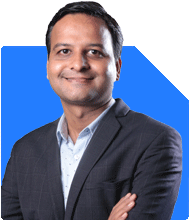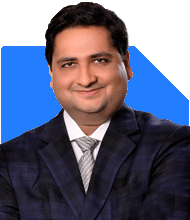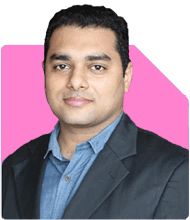Ramalingam Kalirajan |10870 Answers |Ask -Follow
Mutual Funds, Financial Planning Expert - Answered on Apr 24, 2024
He has an MBA in finance from the University of Madras and is a certified financial planner.
He is the director and chief financial planner at Holistic Investment, a Chennai-based firm that offers financial planning and wealth management advice.... more
.jpg)
I’m investing in following MF’s 1. Axis Focused 25 Fund – 5000 /months and 10% yearly Step up 2. Axis Long Term Equity Fund – 5000/ month and 10% yearly Step up 3. Axis Small Cap Fund – 5000/ month and 10% yearly Step up 4. Mirae Asset Emerging Bluechip Fund – 2500/ month 5. Mirae Asset Mid Cap Fund – 5000/ month and 10% yearly step up 6. Parag Parikh Flexi Cap Fund – 5000/ month My investment horizon is 15 years , moderately high risk appetite with focus on maximum Corpus Build. Kindly advice if my portfolio needs any change ? Thanks.
Portfolio Overview:
Focused Equity Funds:
Axis Focused 25 Fund: Concentrates on a limited number of stocks.
Axis Long Term Equity Fund: Focuses on tax-saving with a lock-in period.
Small & Mid Cap Funds:
Axis Small Cap Fund, Mirae Asset Emerging Bluechip Fund, Mirae Asset Mid Cap Fund: These funds invest in smaller to mid-sized companies with higher growth potential but also higher volatility.
Flexi Cap Fund:
Parag Parikh Flexi Cap Fund: Offers flexibility to invest across market caps, sectors, and themes.
Analysis and Recommendations:
Diversification:
Your portfolio is well-diversified across large-cap, mid-cap, and small-cap segments, which is good for long-term growth.
Concentration Risk:
Having multiple funds managed by the same fund house (Axis and Mirae Asset) can lead to concentration risk. Consider diversifying across fund houses to reduce dependency on a single fund manager's strategy and performance.
Focused Funds:
Both Axis Focused 25 Fund and Axis Long Term Equity Fund focus on a limited number of stocks. While they can offer higher returns, they can also be riskier due to concentration.
Step-Up SIPs:
Your strategy of increasing SIP amounts by 10% annually is excellent for leveraging the power of compounding and adjusting for inflation.
Recommendations:
Consolidation:
Consider consolidating your investments by reducing the number of funds and ensuring each fund adds unique value to your portfolio. This can simplify monitoring and reduce overlap.
Add a Debt Component:
Given your moderately high-risk appetite, consider adding a debt component to balance the portfolio and provide stability during market downturns. A Hybrid Equity Fund or a Dynamic Asset Allocation Fund can be suitable.
Review Tax Implications:
As Axis Long Term Equity Fund is a tax-saving fund (ELSS), ensure you're aware of the lock-in period and its implications on liquidity.
Regular Review with a Certified Financial Planner (CFP):
Given your specific goals and risk appetite, it's crucial to review your portfolio periodically with a CFP. They can provide personalized advice, monitor performance, and suggest necessary adjustments based on changing market conditions and your financial goals.
Conclusion:
Your current portfolio aligns well with your long-term investment horizon and risk appetite. However, consider consolidating and diversifying across fund houses to reduce concentration risk and add a debt component for balance. Regular reviews with a CFP can ensure your portfolio remains aligned with your financial goals and market dynamics. Always remember, a well-diversified portfolio tailored to your risk profile and goals can help you navigate the market's ups and downs, aiming for long-term wealth creation.
You may like to see similar questions and answers below
Ulhas Joshi |280 Answers |Ask -Follow
Mutual Fund Expert - Answered on Mar 15, 2023
Nikunj Saraf | Answer |Ask -Follow
Mutual Funds Expert - Answered on Mar 18, 2023
Hardik Parikh | Answer |Ask -Follow
Tax, Mutual Fund Expert - Answered on Apr 20, 2023
Ramalingam Kalirajan |10870 Answers |Ask -Follow
Mutual Funds, Financial Planning Expert - Answered on Apr 12, 2024
Ramalingam Kalirajan |10870 Answers |Ask -Follow
Mutual Funds, Financial Planning Expert - Answered on Jan 09, 2025
Dr Dipankar Dutta |1837 Answers |Ask -Follow
Tech Careers and Skill Development Expert - Answered on Dec 05, 2025
Dr Shyam Jamalabad |108 Answers |Ask -Follow
Dentist - Answered on Dec 05, 2025
Dr Shyam Jamalabad |108 Answers |Ask -Follow
Dentist - Answered on Dec 05, 2025
Dr Shyam Jamalabad |108 Answers |Ask -Follow
Dentist - Answered on Dec 05, 2025
Dr Dipankar Dutta |1837 Answers |Ask -Follow
Tech Careers and Skill Development Expert - Answered on Dec 05, 2025
Ulhas Joshi |280 Answers |Ask -Follow
Mutual Fund Expert - Answered on Dec 05, 2025
Dr Dipankar Dutta |1837 Answers |Ask -Follow
Tech Careers and Skill Development Expert - Answered on Dec 04, 2025
Ravi Mittal |676 Answers |Ask -Follow
Dating, Relationships Expert - Answered on Dec 04, 2025
Anu Krishna |1745 Answers |Ask -Follow
Relationships Expert, Mind Coach - Answered on Dec 04, 2025
Anu Krishna |1745 Answers |Ask -Follow
Relationships Expert, Mind Coach - Answered on Dec 04, 2025




























